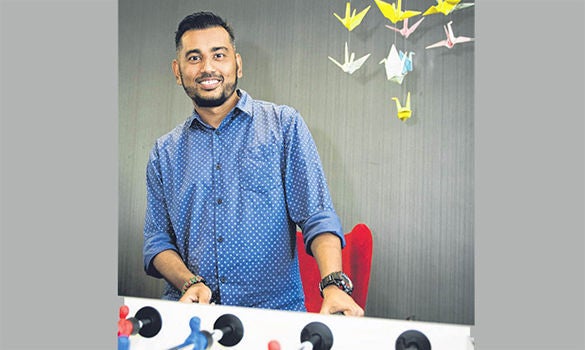
Mr Mohamed Rezal Yusof collapsed after his second heart attack in 2015 and was fitted with a left ventricular assist device as a bridge to transplant. He underwent a successful 11-hour heart transplant last year. ST PHOTO: SYAMIL SAPARI
The number of people on the waiting list for a heart transplant has more than tripled over the last 10 years. Some have died waiting
Just three months after his first heart attack in November 2014, Mr Mohamed Rezal Yusof suffered a second one – this time more severe and eventually putting him on the waiting list for a transplant.
While the first heart attack was managed with blood thinning medication as doctors did not detect any blockage in the arteries, the second one severely damaged his heart muscle.
Mr Rezal, an assistant engineer, said he had collapsed at the Singapore General Hospital (SGH) after going there when he felt unwell.
“When I woke up, I was weak and could not move my limbs. I was very afraid I was not going to make it,” said the former smoker, who had tried to cut down on cigarettes after the first heart attack.
Due to weakened heart function, he had a left ventricular assist device (LVAD) implanted. It is a mechanical pump attached to the heart that helps it to pump blood while the patient waits for a heart transplant. The pump is connected through a tube, called a driveline, to a controller and power source outside the body.
Mr Rezal needed his homemaker wife, 35, to change the dressing for the driveline every day, and even a daily routine like taking a shower required adaptation because the LVAD cannot come into contact with water.
The 37-year-old, a qualified lifeguard who was a physical training instructor during national service, had to give up his favourite sport – swimming – and stick to less vigorous exercise.
An LVAD can keep patients alive for many years, but Mr Rezal started having recurrent infections with the driveline, said Assistant Professor Tan Teing Ee, who heads the National Heart Centre Singapore’s (NHCS) Department of Cardiothoracic Surgery.
Prof Tan, who is part of the team of doctors that managed Mr Rezal’s condition, said such driveline infections happen in about one in 10 patients using the LVAD, when bacteria spread from where the tube exits the abdomen to underneath the skin.
Even though Mr Rezal was taking antibiotics and staying in hospital five times for around a week to two weeks each time, the infection continued to recur and the permanent solution was to remove the LVAD and have him undergo a heart transplant, said Prof Tan.
“Unfortunately, only about one-fifth of donor referrals are deemed medically suitable for heart transplant as the donor has to be certified as brain-dead, and the heart has to function normally and does not have significant coronary artery disease,” he added.
“The lack of donors has resulted in a growing waiting list for heart transplants and the average waiting time is about 2.4 years.”
Over the last 10 years, the number of people on the waiting list for a heart transplant has more than tripled from seven to 24 people.
Mr Rezal waited more than two years until one morning in September last year, when he received a call with news about a potential donor.
“I was very shocked and happy,” he said.
“I’ve heard that some patients had waited three to four years for a heart.”
Some others had died waiting.
Mr Rezal rushed to SGH, where he underwent a successful 11-hour surgery.
He was discharged from hospital three weeks later with a new heart and a new lease of life.
He went back to playing sports, including swimming, and can now run after his children like any proud father. He has three children, aged 13 to one.
Local and international data has shown that three-fifths of heart transplant patients live beyond 10 years, said Prof Tan.
Besides taking immunosuppressants for life to prevent rejection of the heart, patients should also exercise regularly and eat healthily, he added.
Mr Rezal said: “I am very grateful to the donor family for giving me a second chance in life. I will treasure it by living a healthy lifestyle.”
Author: Felicia Choo
Source: The Straits Times, Singapore Press Holdings Limited. Reproduced with permission.
Contributed by














 Get it on Google Play
Get it on Google Play